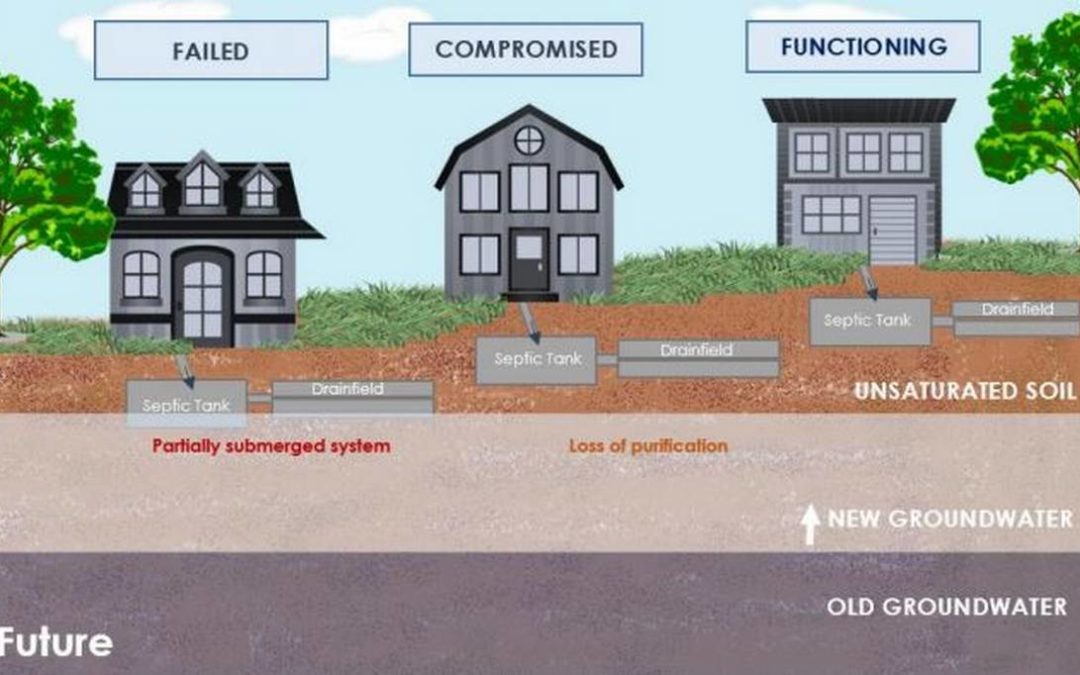SOURCE: Miami Herald
DATE: January 10, 2019
SNIP: Miami-Dade has tens of thousands of septic tanks, and a new report reveals most are already malfunctioning — the smelly and unhealthy evidence of which often ends up in people’s yards and homes. It’s a billion-dollar problem that climate change is making worse.
As sea level rise encroaches on South Florida, the Miami-Dade County study shows that thousands more residents may be at risk — and soon. By 2040, 64 percent of county septic tanks (more than 67,000) could have issues every year, affecting not only the people who rely on them for sewage treatment, but the region’s water supply and the health of anyone who wades through floodwaters.
“That’s a huge deal for a developed country in 2019 to have half of the septic tanks not functioning for part of the year,” said Miami Waterkeeper Executive Director Rachel Silverstein. “That is not acceptable.”
Septic tanks require a layer of dirt underneath to do the final filtration work and return the liquid waste back to the aquifer. Older rules required one foot of soil, but newer regulations call for double that. In South Florida, there’s not that much dirt between the homes above ground and the water below.
Sea level rise is pushing the groundwater even higher, eating up precious space and leaving the once dry dirt soggy. Waste water doesn’t filter like it’s supposed to in soggy soil. In some cases, it comes back out, turning a front yard into a poopy swamp.
High tides or heavy rains can push feces-filled water elsewhere, including King Tide floodwaters — as pointed out in a 2016 study from Florida International University and NOAA — or possibly the region’s drinking supply.

